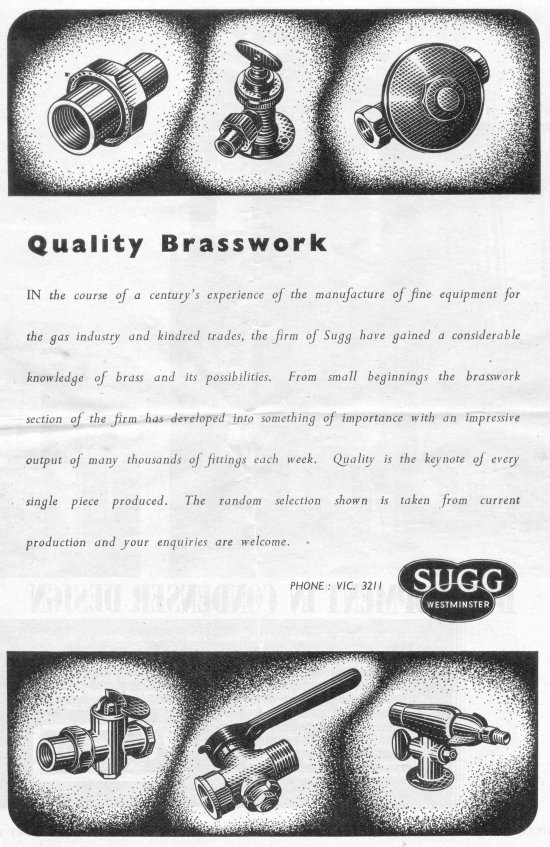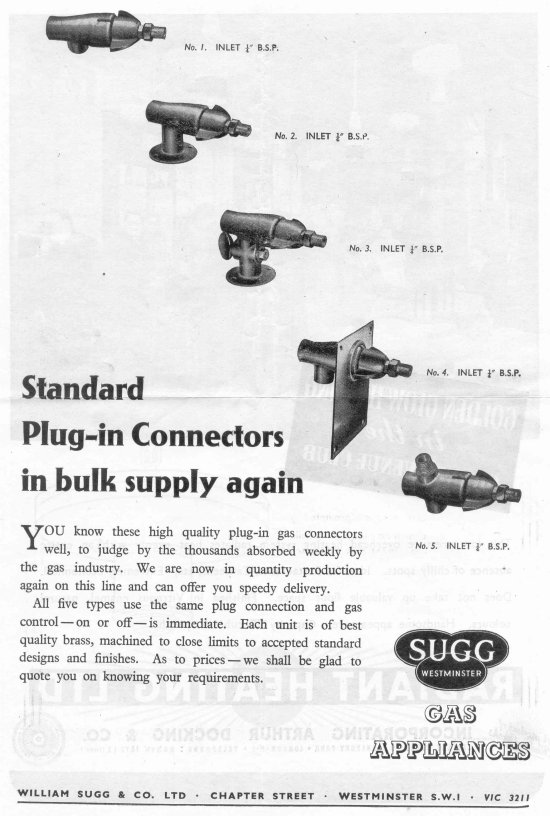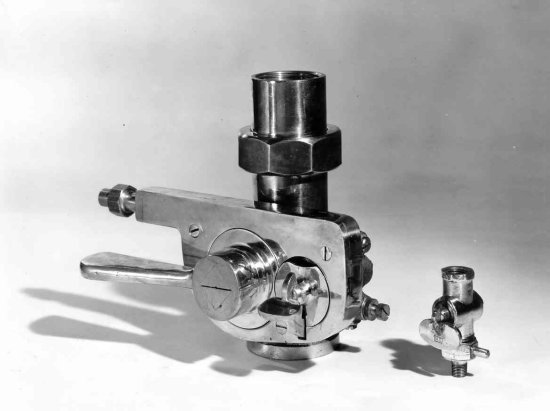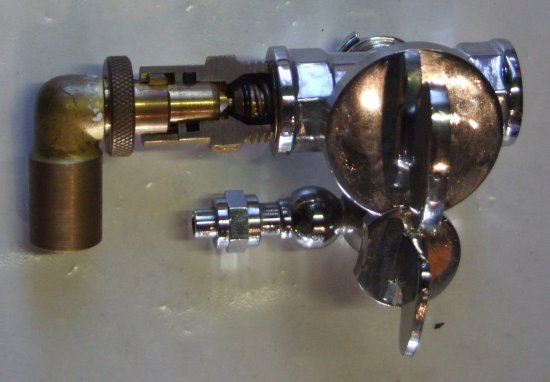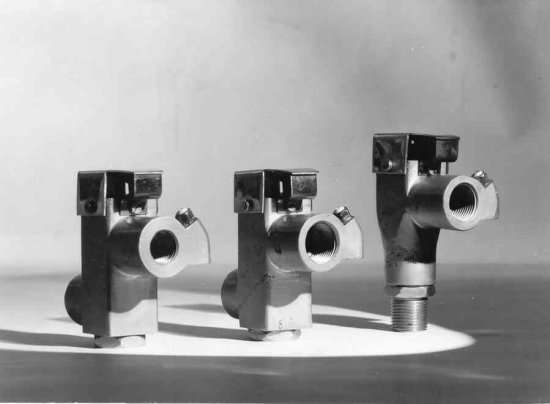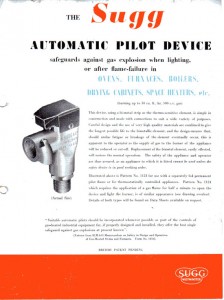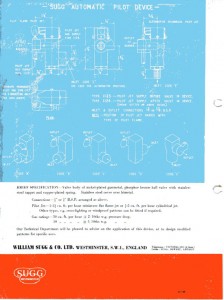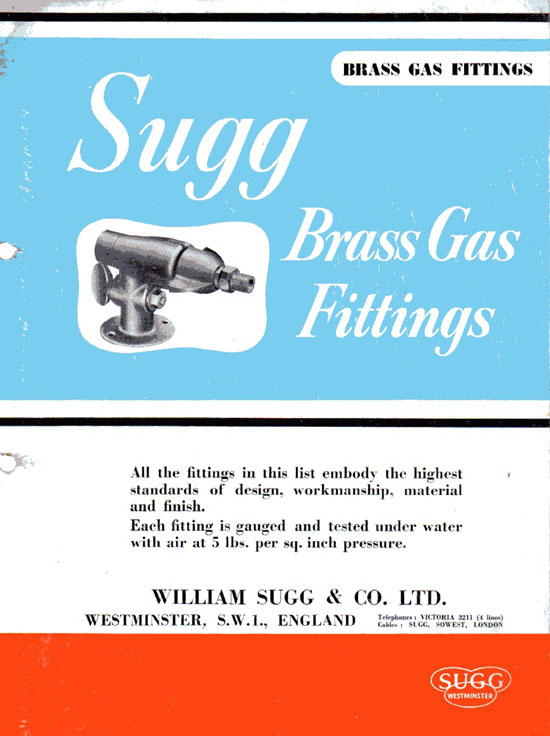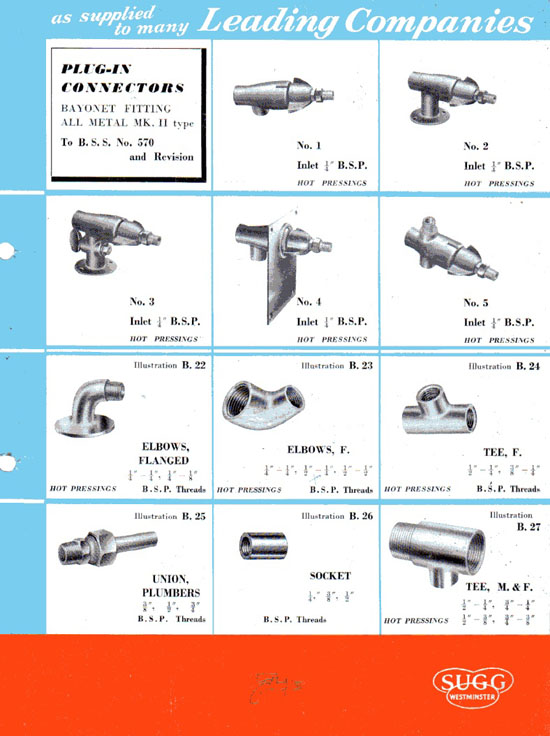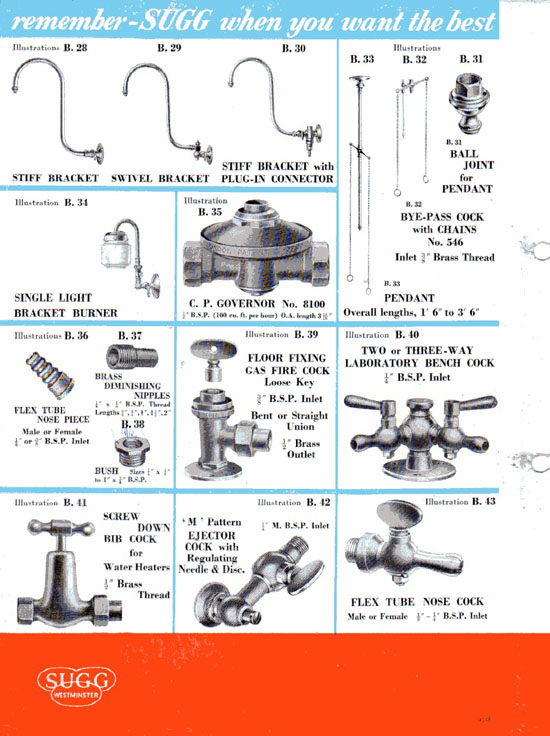The title ‘brassware’ applies to almost any brass item that carries a fluid. In the Sugg business this would predominantly be gas but it would equally apply to water.
Whilst many items such as gas taps control the flow of gas, ‘brassware’ equally applies to elbows, adaptors and a myriad of items as can be seen below. William Sugg produced millions of brassware items.
The following two advertisements in the gas press indicate the diversity of brasswork made by the Sugg company and were part of the effort to restart more normal business after WW2.
Advert in Gas Journal July 2nd 1947
Advert in Gas Journal June 4th 1947
The intricate device on the left above is one version of what was known as an ‘interlocking cock’. There are two taps on these devices usually to provide firstly a pilot supply followed by a main gas supply and the reverse when turning off. If you look closely at the side of the body you will see two circles, the left hand one larger than the right hand one. You will also see that the right hand one has a curved cut-out at the top and that the outer diameter of this circle interferes with the larger circle of the left hand one. As it stands it would not be possible to turn the left hand lever until the right hand one had been turned anti-clockwise so that the cut-out aligns with the outer diameter of the left hand tap.
The interlocking cock below also shows the two parts of a bayonet connection which has been sectioned for illustrative purposes. When the knurled ring is turned the ‘plug’ is released and the spring loaded plunger pushes the ‘o’ ring seal against the cone cutting off the gas flow.
When Crawford and Ray Sugg were developing the Halcyon warm air appliances after WW2,(see Warm Air Heating) one of the devices they had to develop was a flame failure device (FFD) which they called an Automatic Pilot Device (APD) and much later in modern times was to be called the flame safety device. The three versions above are all APD’s using a bi-metal – a piece of metal that bends when heated – to press a plunger to allow gas to pass. If the flame goes out for any reason the bi-metal cools and straightens allowing the plunger to close and shut off the gas. The later volume production of Halcyon models encouraged the development of the ‘multifunctional’ gas valve developed specifically by Honeywell for Sugg, to provide all the individual controls required on these appliances, in one device. (A gas tap, a pilot supply, an FFD and a solenoid valve)
The sales leaflets in this colour scheme were designed by Crawford Sugg when he took on the sales director’s job in addition to being the Technical Director after the war until the Company could fill the position.
Copyright © Chris Sugg 2006-13

